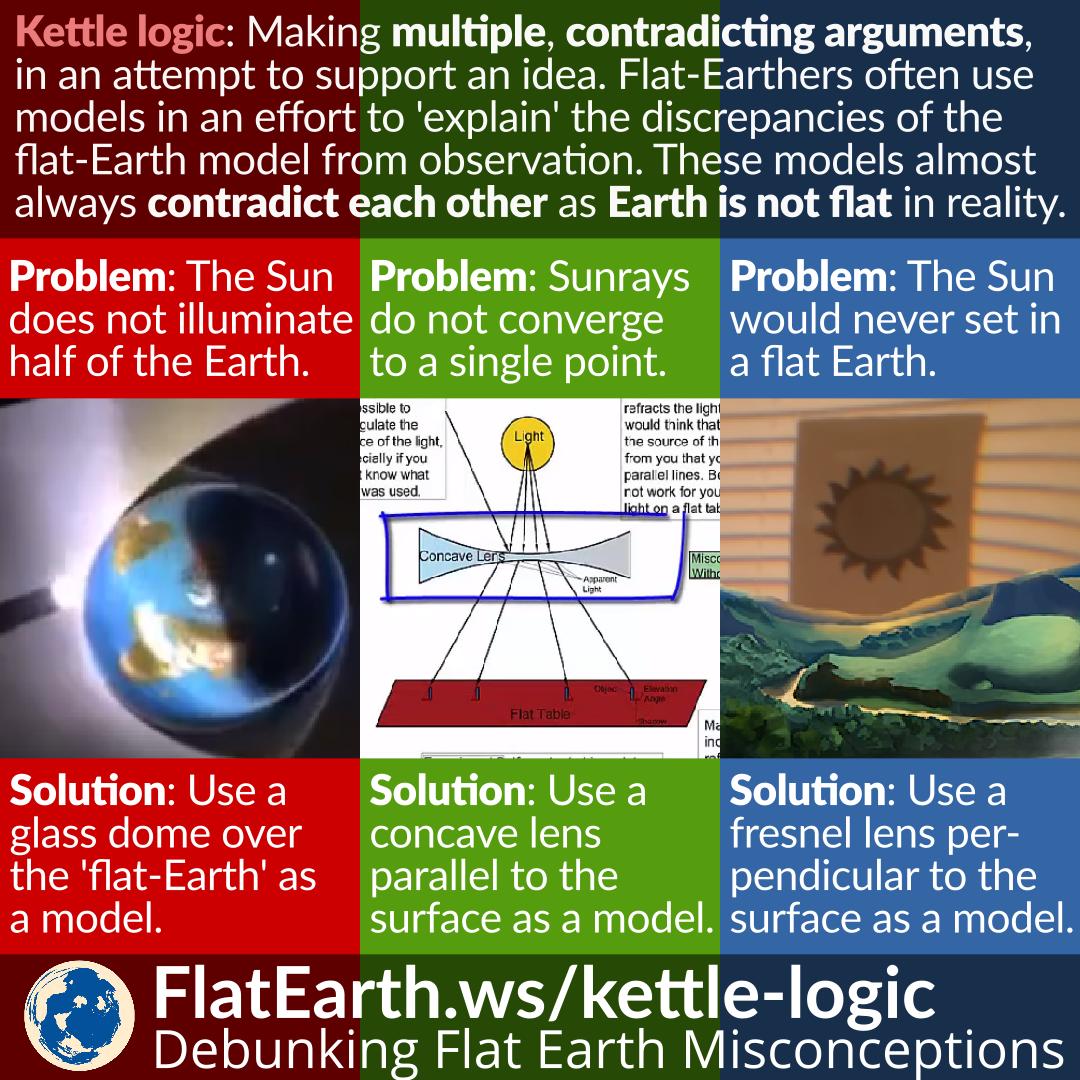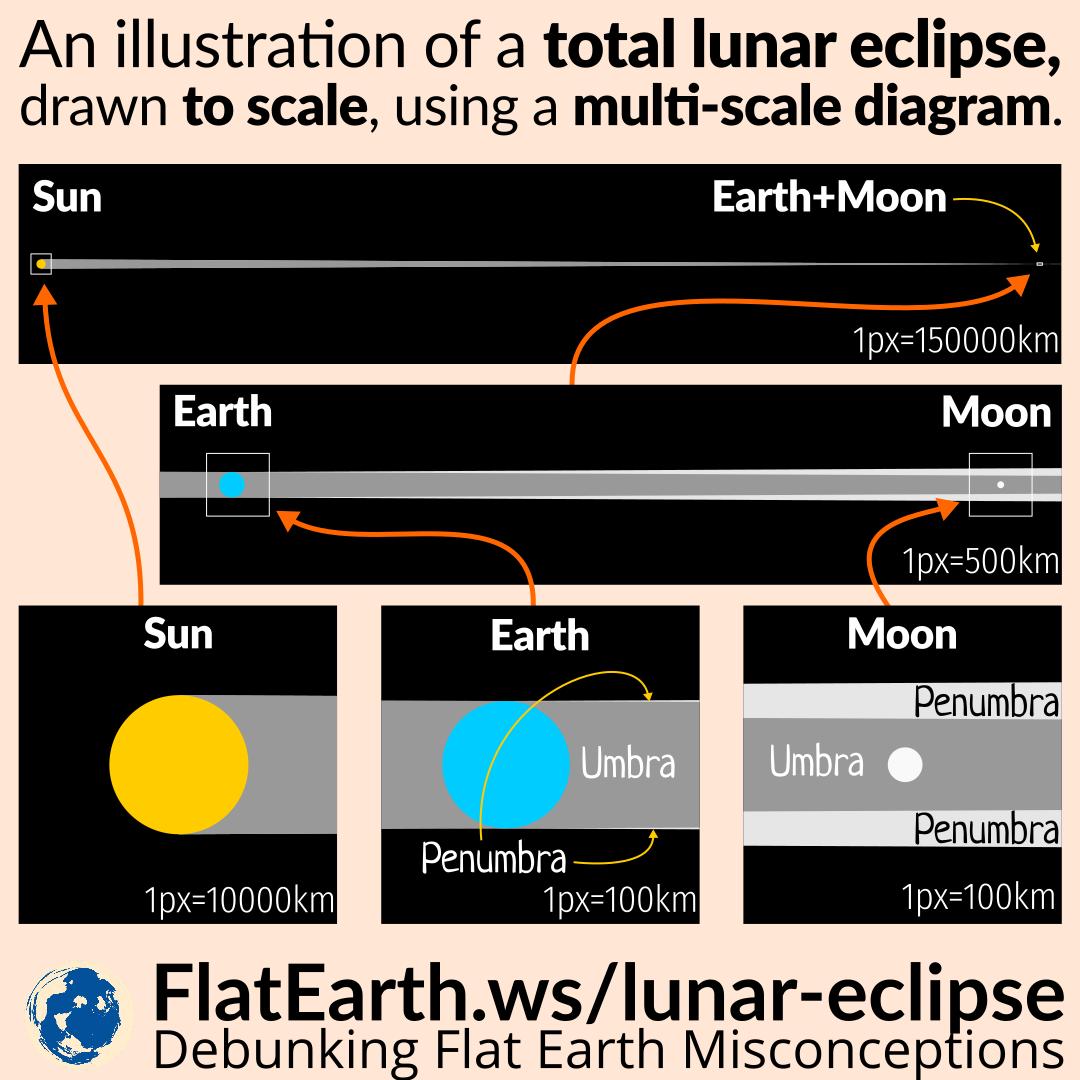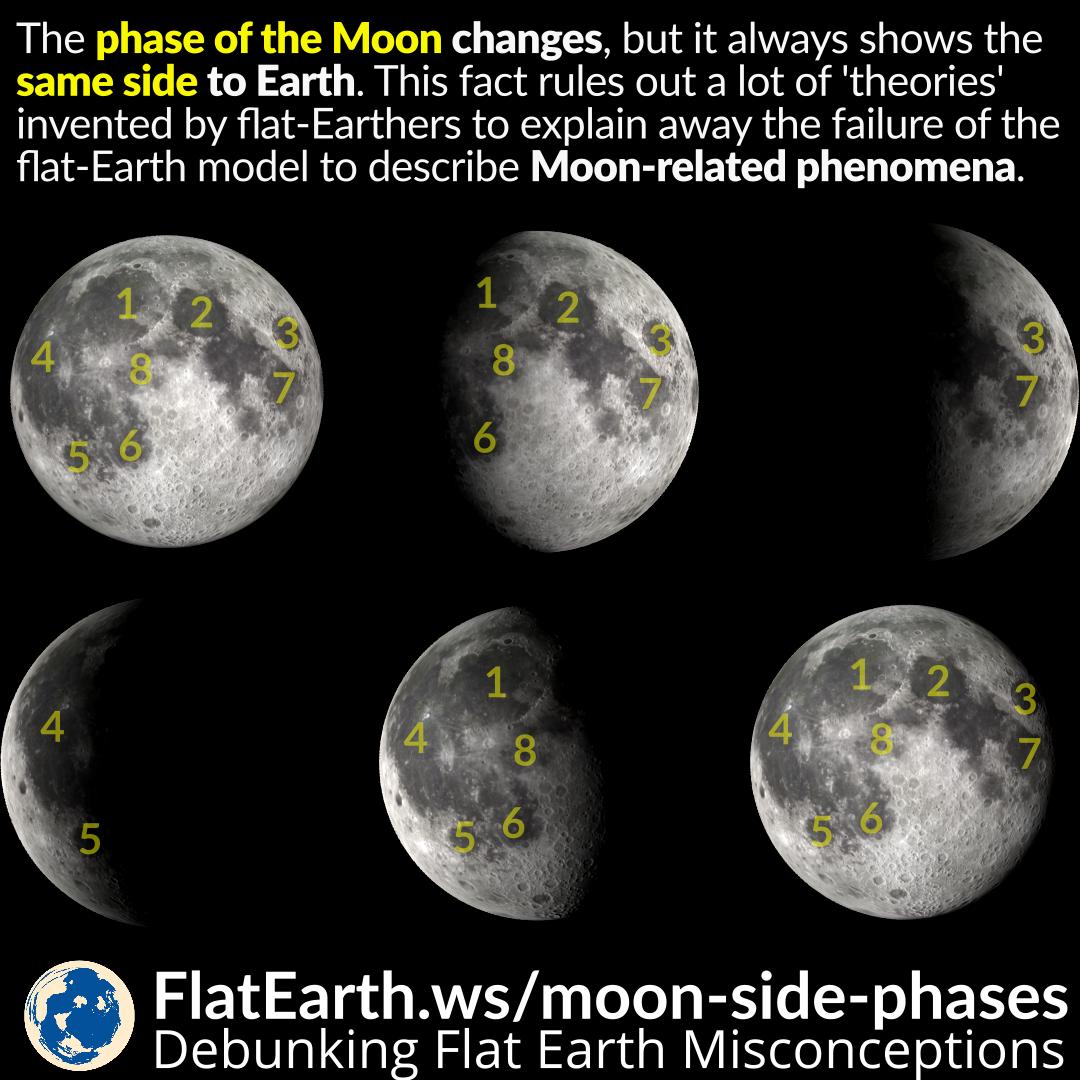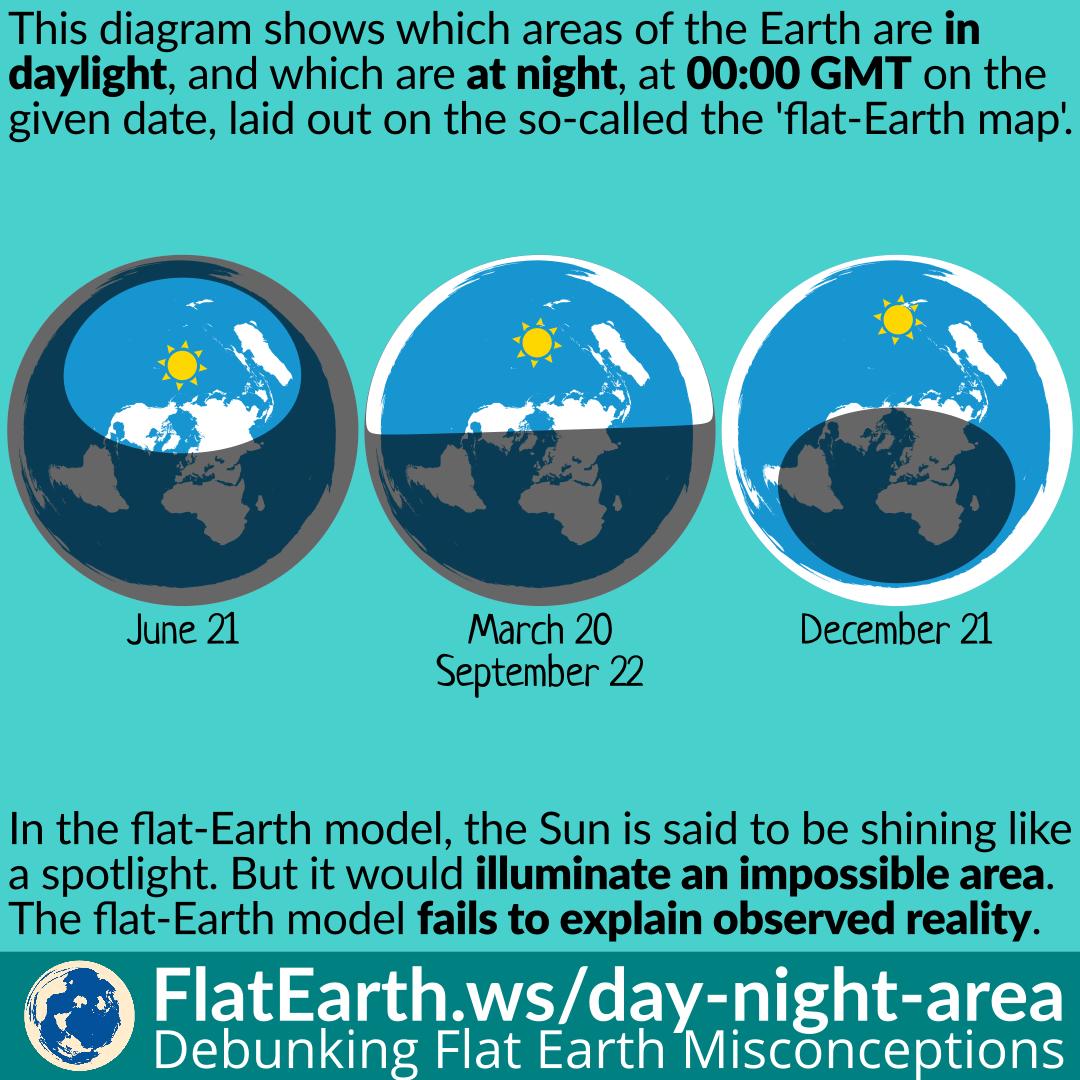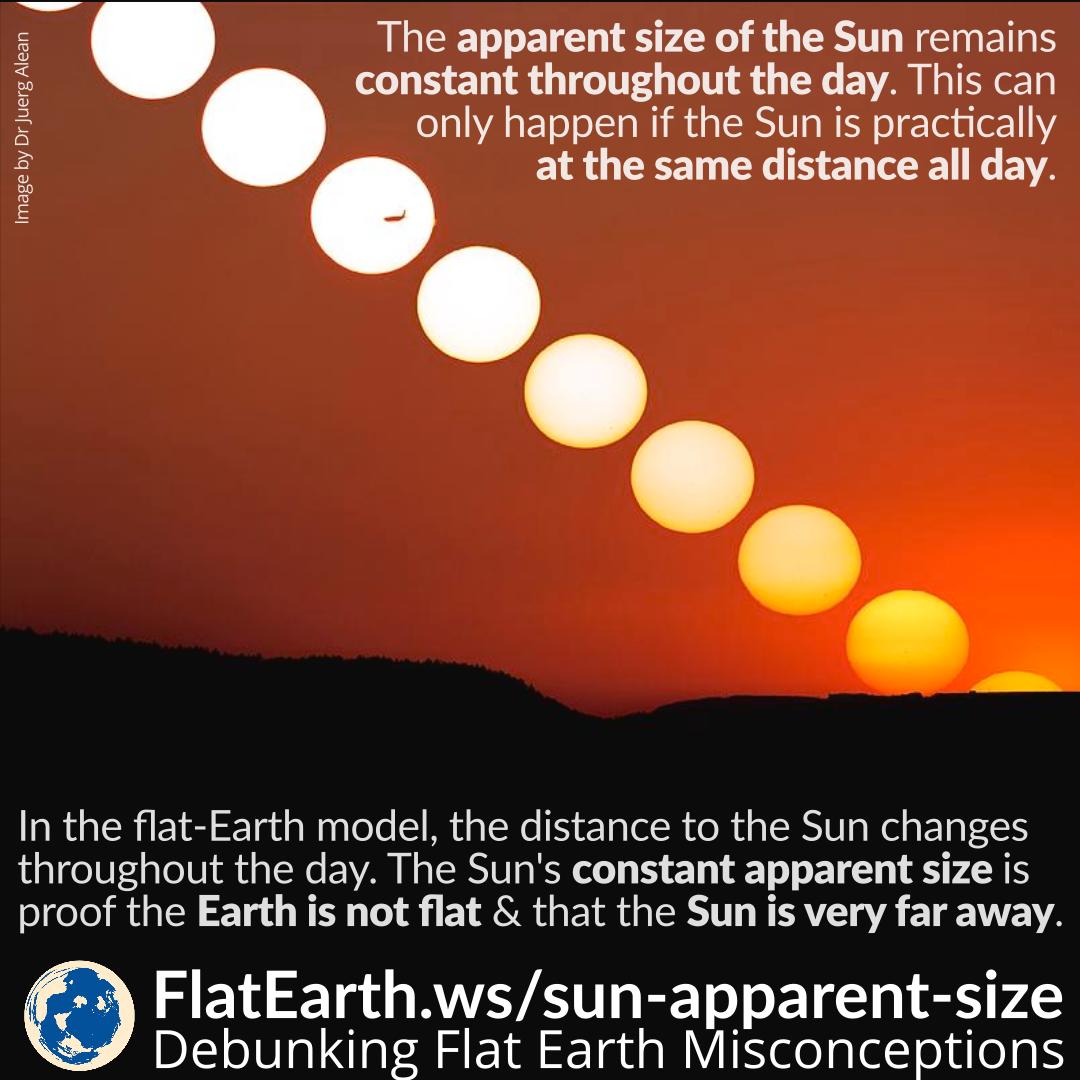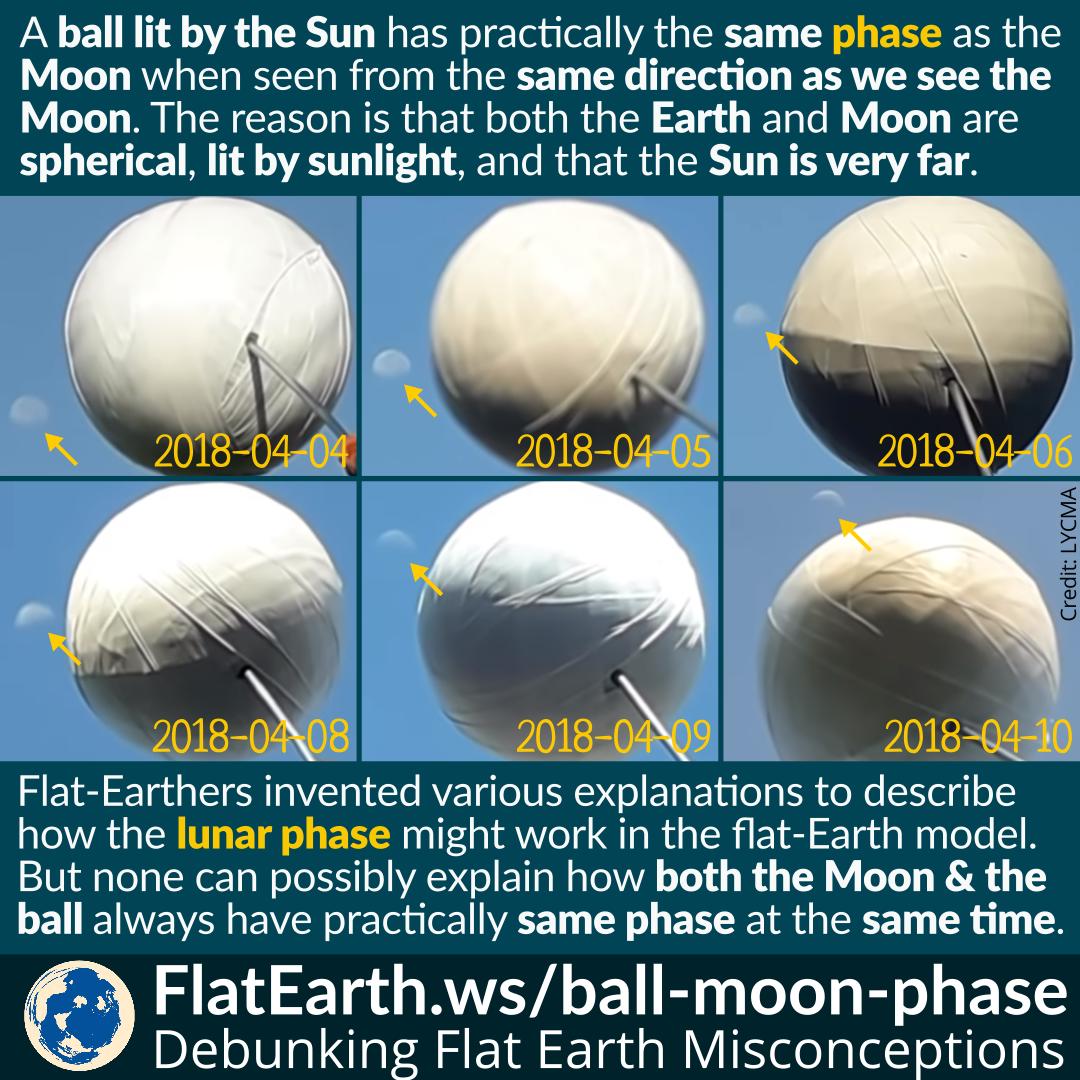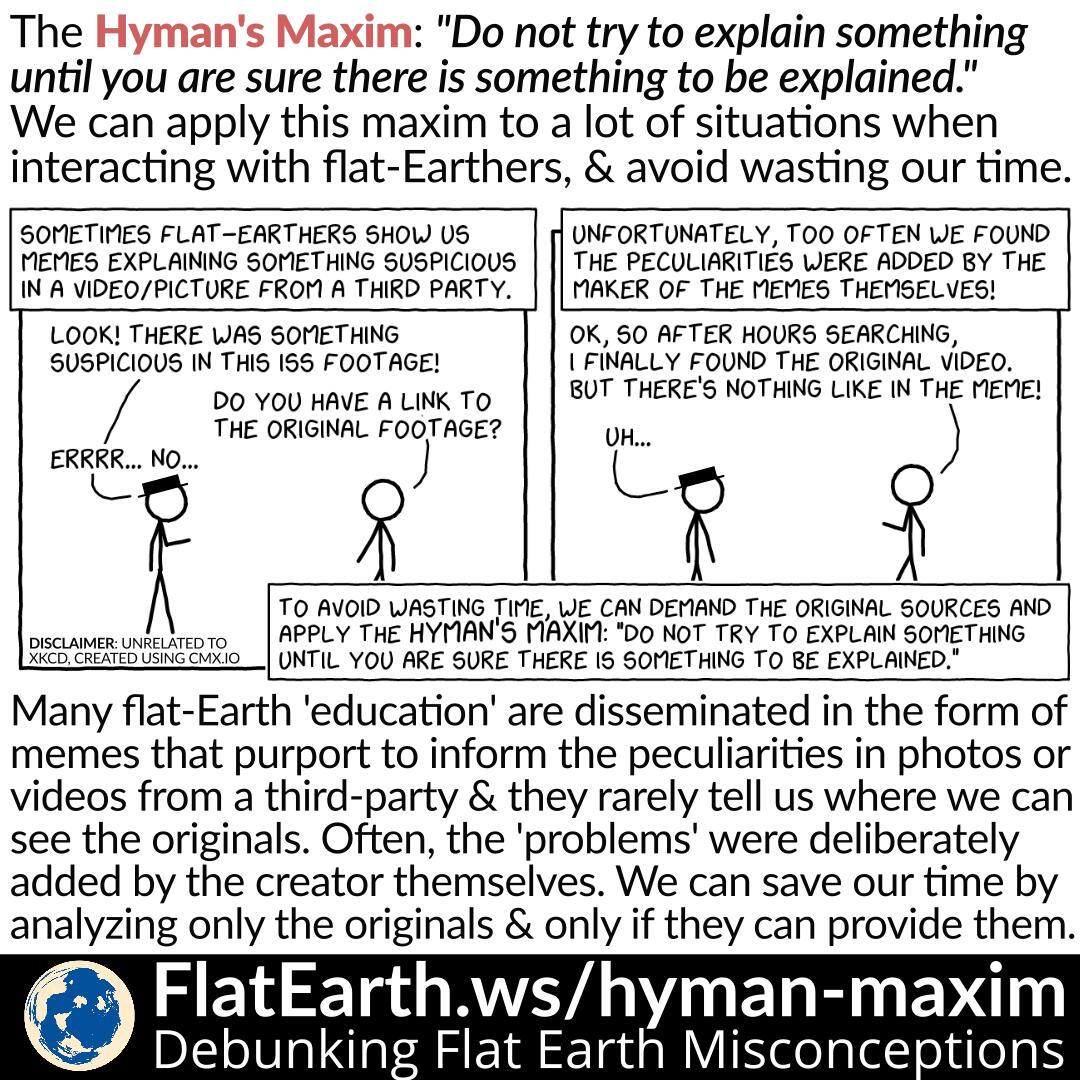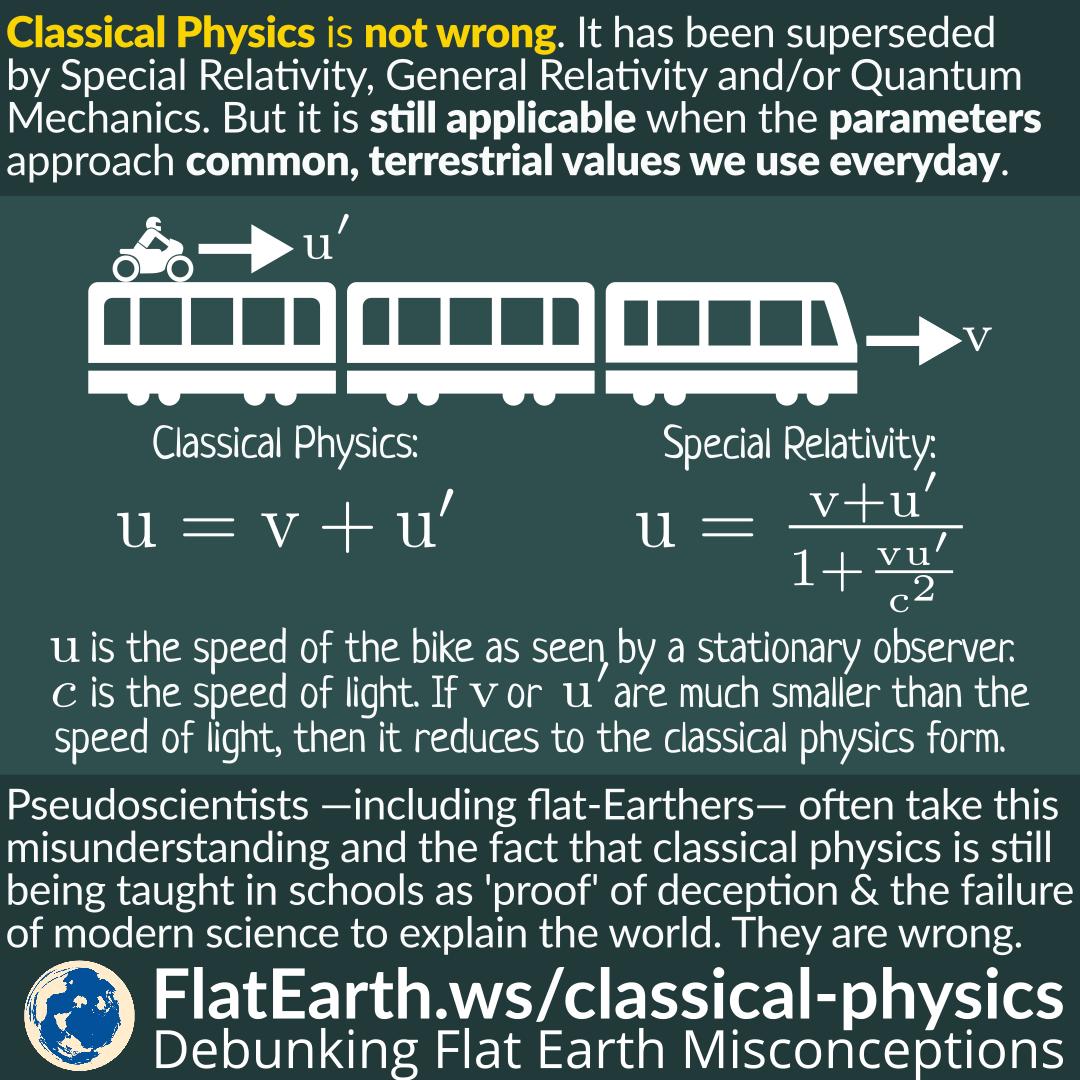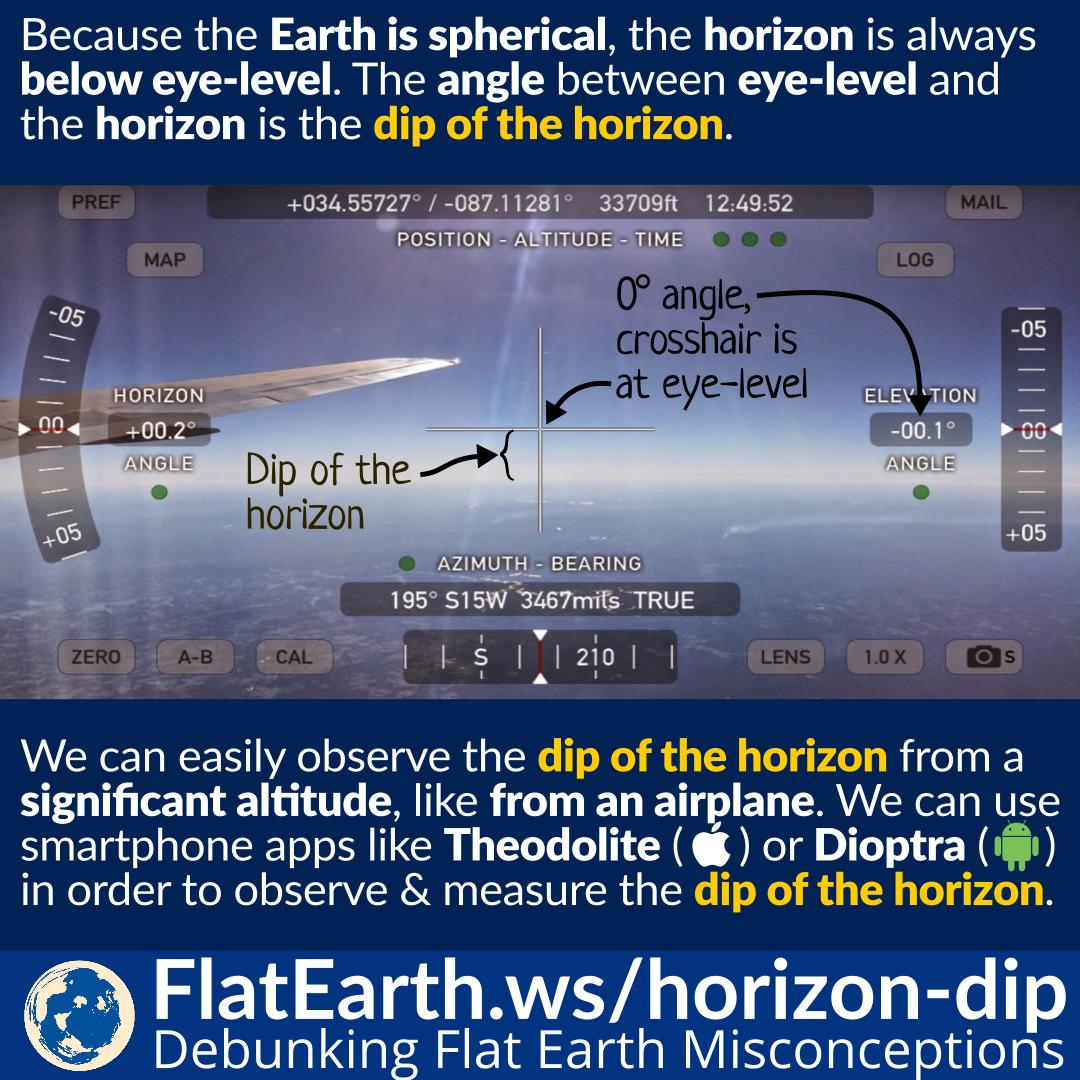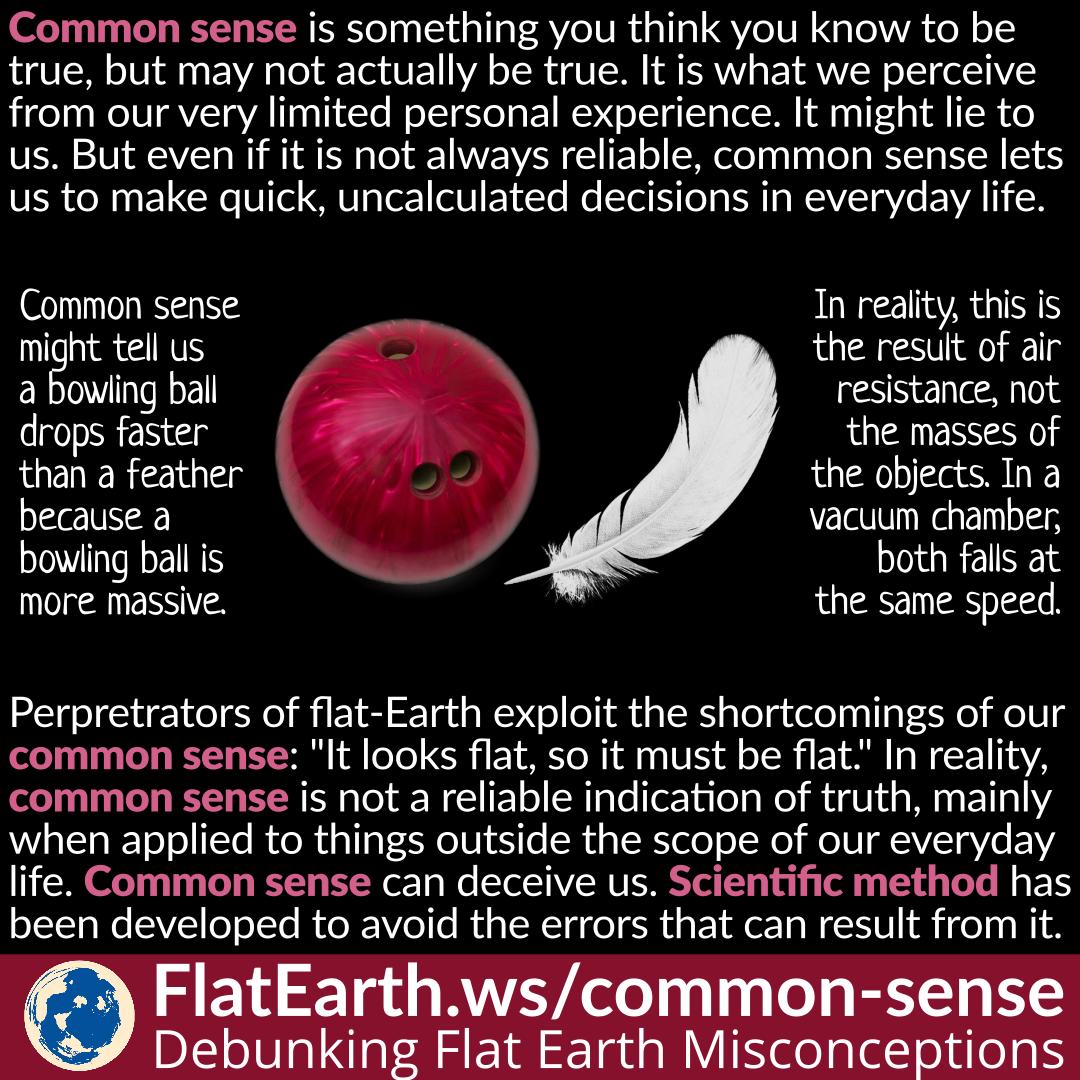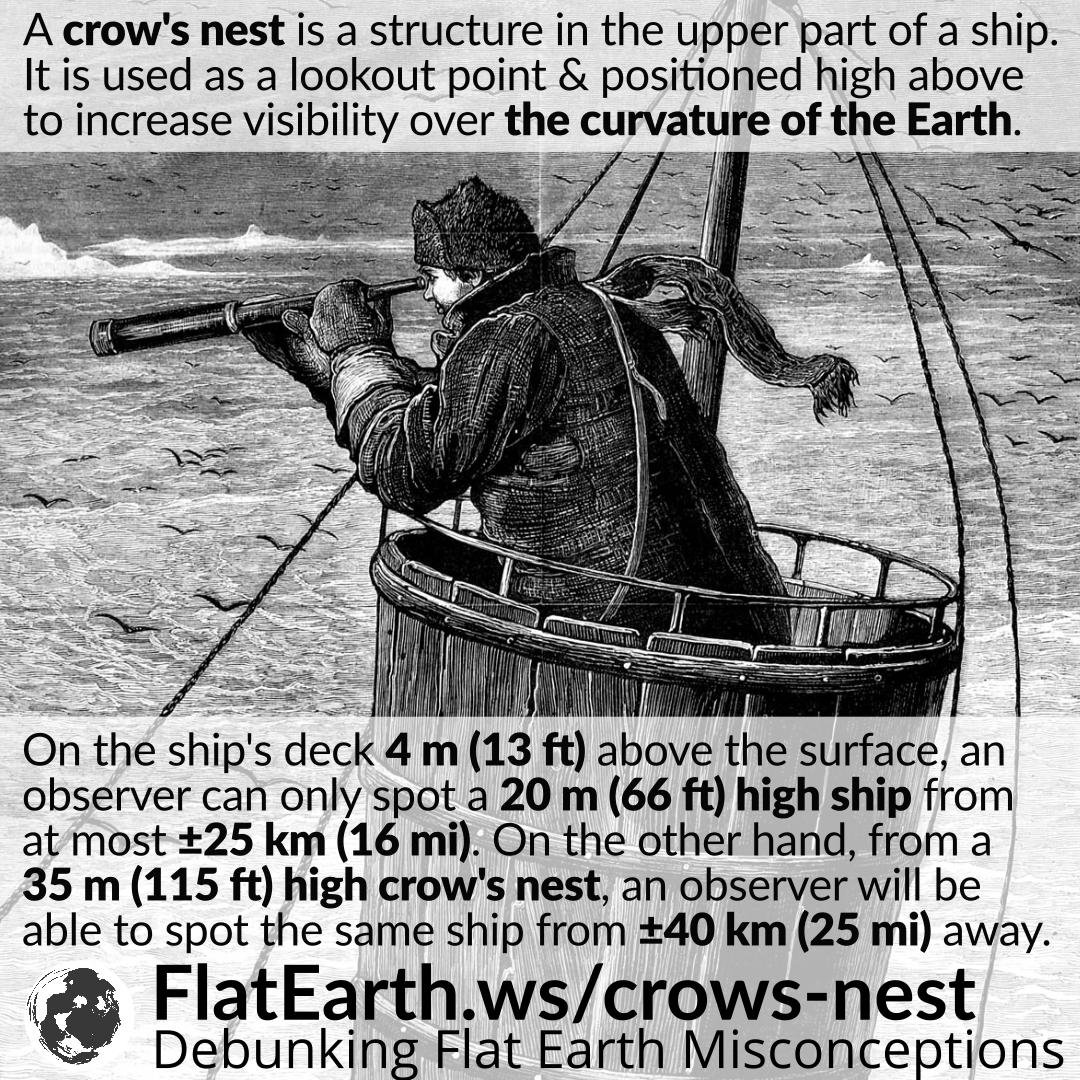Kettle logic is making multiple contradicting arguments in an attempt to support a single point or idea.
Kettle logic occurs very frequently in the flat-Earth community. If they meet a natural phenomenon cannot readily be explained using the flat-Earth model, they would often devise ‘experimental models’ to ‘explain’ how the said phenomenon can happen in a flat-Earth.
The problem? These models are in conflict with each other.
Continue reading “Kettle Logic: Conflicting ‘Explanations’ in the Flat-Earth Model”


